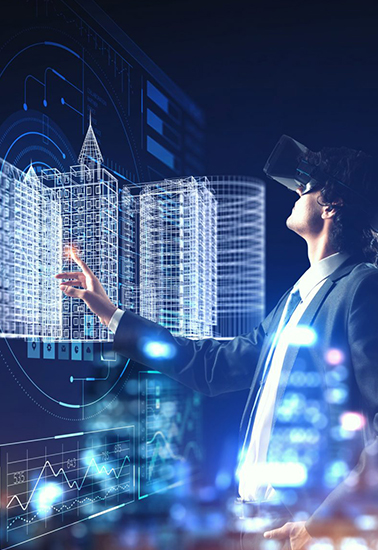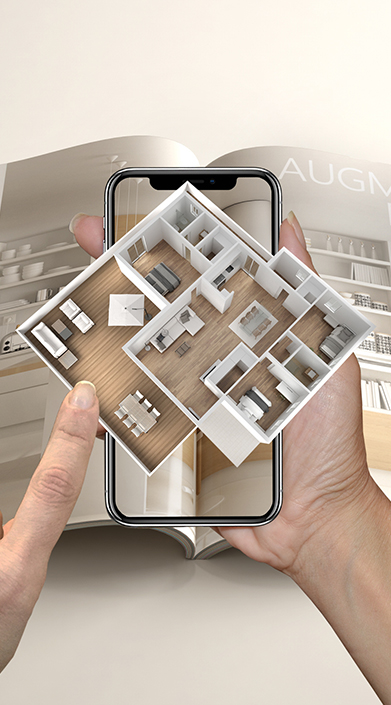The changing reality of Real-Estate
They say looks are deceiving, but when it comes to real estate, looks are decisive. Real Estate is probably one of the last industries anyone could’ve imagined, to be viewed from the lens of immersive technology. But the AR, VR and MR technologies are proving to be totally disruptive for the sector. While the traditional methods included print or online ads and contacting customers verbally or via physical visits, the trend is quickly shifting to exploring a property on a VR headset.
The growing popularity of Immersive technology in Real-Estate
This trend is affirmed by a report published by the National Association of Realtors which states that 77% of the real estate agents prefer resorting to a virtually immersive form of presentation to help buyers identify the right property for them. According to a survey by VRARA, almost 40% of apartment buyers affirmed that a simulative tour of the property plays a crucial role in strengthening purchase decisions. Moreover, 73% clients who were offered panoramic tours by the developers, positively appraised the presentation style. 65% of potential apartment buyers confirmed that an immersive staging helped them to “feel” the real size and gauge the volume of the rooms. Immersive technology also helps the realtors market their property with minimal investment and quick results. An analysis concluded that around 50% of home buyers request same day access to a property for viewing, and Simulation technology makes that a reality. According to a Goldman Sachs report, around 1.4 million registered real estate agents who use VR staging for a property tour, collectively contributed to a real estate commissions market of $107 billion. The same report predicts that the AR and VR share in real estate market is estimated to reach $80 billion by the year 2025, growing at a CAGR of 31.2%.


Benefits of Augmented and Virtual Reality for Real-Estate
The AR and VR markets in the real estate sector grew swiftly due to quick adoption of technology that contributed immensely towards enhanced user experiences, thus making the buying and selling process smooth. These technologies have designed a new reality altogether for architects, builders, sellers and buyers, that ensures cost effectiveness, global reach, mobility, visualization of changes, construction management and profits.
According to a recent E-commerce statistic report, 77% of potential buyers who intend to purchase on rent a house online, almost always abandon their idea. Virtual reality, with its immersive capabilities, provides the solution to this situation. Virtual staging allows prospective buyers to design and customize the apartments themselves, which helps visualize a space better. Virtual tours allow buyers and investors to see inside a premise through an interactive online experience that helps them gain sense of the building’s space and style. These virtual tours can either be in the form of 360-degree videos that enable guided viewing or immersive visits that allow users to virtually move around and explore the property. Agents can also show properties that aren’t fully built yet by putting together 3-D rendered interactive tours. Augmented reality powered apps enable users to learn essential information (price, square foot etc) about a property, simply by pointing a phone at it, thereby transforming a drive through into a real estate shopping tour. AR can be used to enhance or replicate digital drawings when housing projects move from a blueprint to construction phase, thereby reducing the chances of errors and analysing the exact raw material requirement.
The way forward for Real-estate with EDIIIE
These are just few of the many ways that Digital Reality is emerging as a game-changer for the real estate industry. And at EDIIE, we are the trailblazers who are bringing about this change to the Indian Real-estate scenario. Through our unprecedented services, we are delivering unmatched value to our clients and the industry as a whole.







.png)































